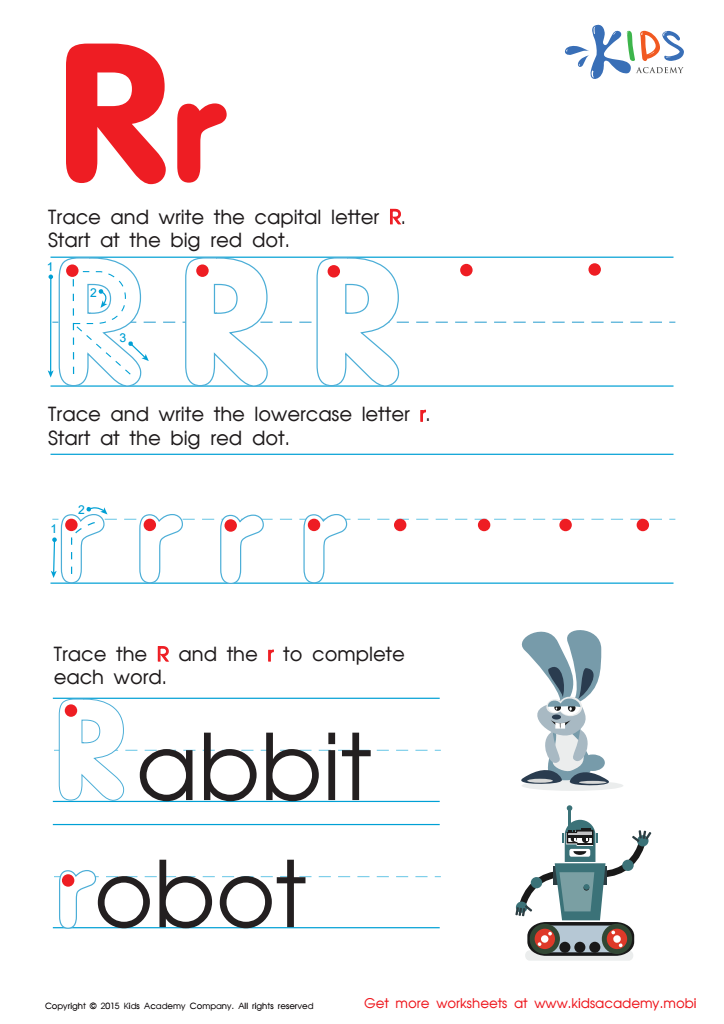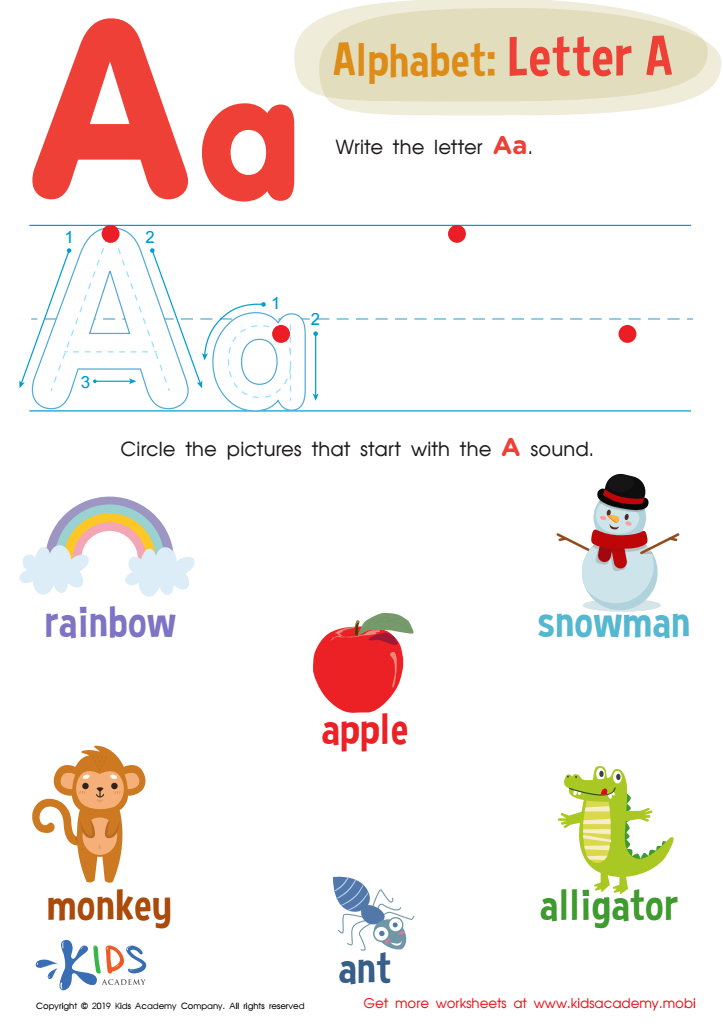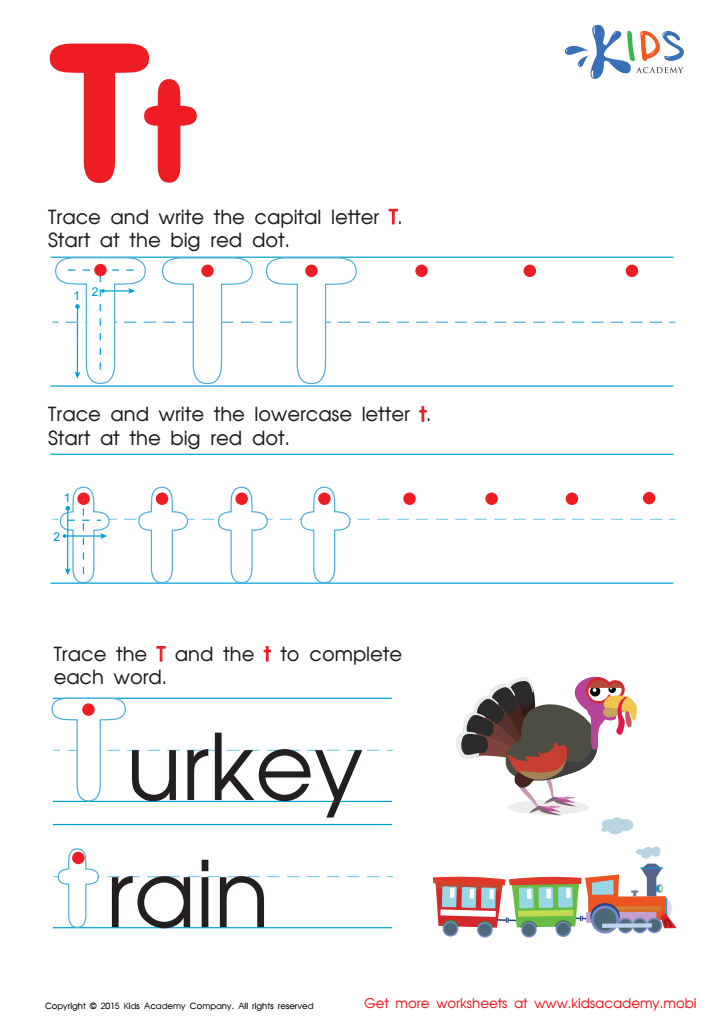Alphabet tracing Tracing Letters Worksheets for 7-Year-Olds
7 filtered results
-
From - To
Introduce alphabet tracing fun to your 7-year-olds with our engaging letter worksheets. Our curated printable pages help children enhance their handwriting skills while making learning enjoyable. Each worksheet offers clear dotted lines and playful illustrations to guide kids as they practice both uppercase and lowercase letters. Perfectly tailored to develop fine motor skills and boost confidence, these sheets are excellent for boys and girls alike. Educators and parents will appreciate our comprehensive approach, merging educational rigor with creativity. Transform the way your child learns the alphabet with Kids Academy's inventive tracing resources today!


Letter R Tracing Page


Letter P Tracing Page


Letter Q Tracing Page


Letter H Tracing Page


Letter A Tracing Worksheet


Letter T Tracing Page


Letter D Tracing Page
Parents and teachers should prioritize alphabet tracing for 7-year-olds because it serves as a crucial foundation for literacy skills. At this age, children are transitioning from recognizing letters to mastering the skills necessary for fluent reading and writing. Alphabet tracing enhances motor coordination and dexterity, key components in developing legible and efficient handwriting. These skills lay the groundwork for future academic success, as clear and quick handwriting allows children to focus on higher-level writing tasks instead of struggling with letter formation.
Additionally, tracing letters reinforces visual memory and letter recognition, essential for spelling and reading. When children trace letters, they engage multiple senses—sight, touch, and even hearing when combined with phonics—strengthening neural connections in the brain. This multisensory approach ensures that children can recognize and recall letters effortlessly.
Moreover, mastering letter tracing builds self-confidence and pride in one's abilities, fostering a positive attitude toward learning. It transforms a challenging task into an achievable objective through repetition and practice, leading to mastery.
Incorporating alphabet tracing sets the stage for smoother learning in subsequent years, ensuring that children don’t face barriers due to poor letter recognition or writing delays. All these reasons underscore why alphabet tracing is an indispensable tool for fostering a successful learning journey.
 Assign to My Students
Assign to My Students





















